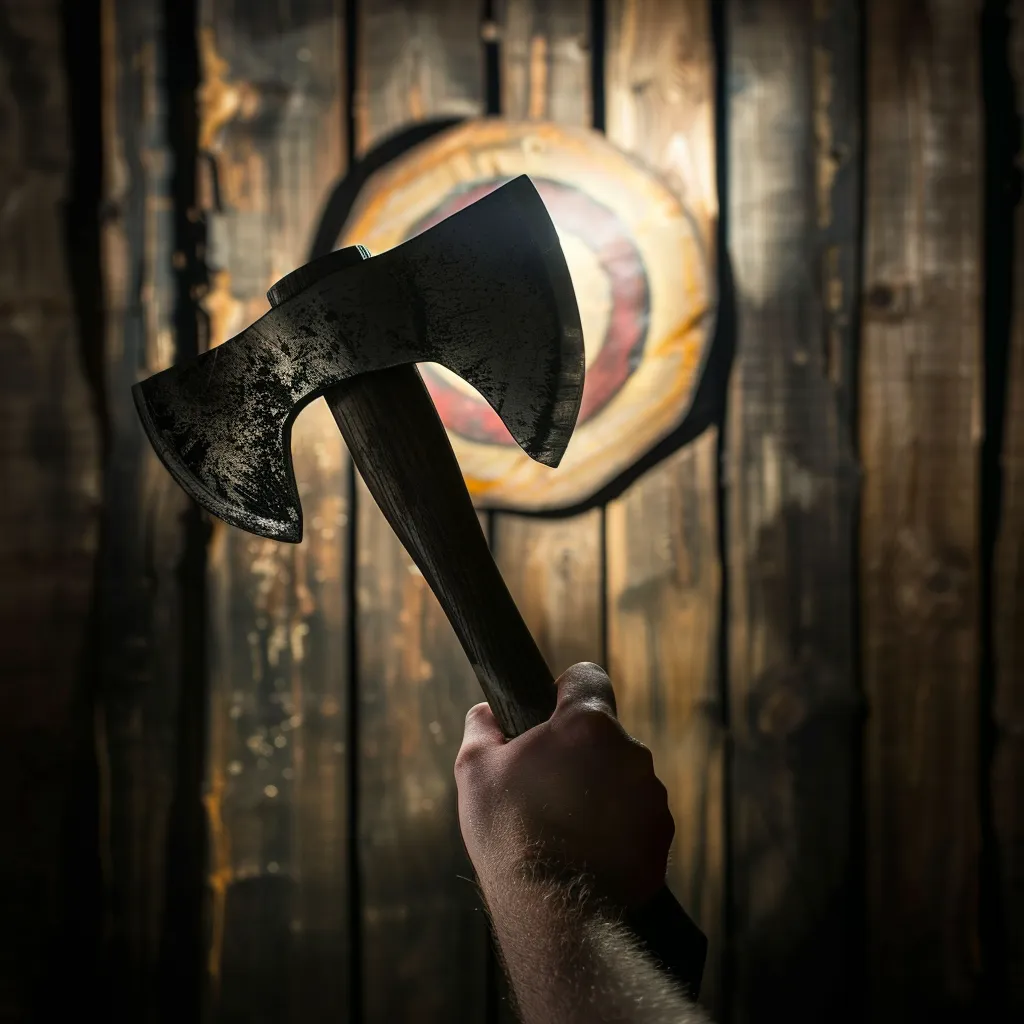Emergency situations at axe-throwing venues can occur unexpectedly, risking the safety of staff and customers. This guide outlines creating an effective emergency strategy to enhance safety and customer satisfaction. Key topics include identifying potential emergencies, training staff for quick responses, and ensuring proper safety equipment is available. By implementing these procedures, venues can mitigate liability claims and foster customer loyalty, ultimately creating a safer environment for all.
Key Takeaways
- Safety measures are crucial for preventing injuries in axe-throwing venues
- Staff training enhances emergency response capabilities and builds customer trust
- Clear communication protocols help minimize confusion during emergencies
- Regular safety audits identify potential hazards and improve emergency procedures
- Maintaining compliance with regulations ensures a safer environment for everyone
Understanding the Importance of Emergency Preparedness at Axe Throwing Venues

Recognizing the risks involved in risks involved in axe-throwing activities activities is vital for ensuring venue safety. Legal obligations require compliance with safety standards, helping to protect customers. By implementing effective emergency procedures, venues can build trust with their patrons, enhancing loyalty programs. This section discusses these aspects, including safety measures like dress codes and accessibility considerations.
Recognizing the Risks Involved in Axe-Throwing Activities
Axe-throwing venues involve inherent risks that participants should recognize to prevent injury. Safety is critical, especially when alcohol, like liquor, is served. Ensuring that guests have the proper knowledge about handling axes, such as hatchets, can significantly reduce the risk of accidents and ensure that everyone enjoys their experience safely:
Legal Obligations for Venue Safety Compliance
Axe-throwing venues must understand their legal obligations for safety compliance to protect both customers and themselves. These obligations ensure that venues implement proper risk management strategies, minimizing the chances of accidents that could lead to financial expenses or legal disputes. By maintaining safety standards and adhering to contracts, venues can enhance the customer experience and build a positive reputation.
- Understand legal obligations for safety compliance.
- Implement effective risk management strategies.
- Minimize accidents and reduce expenses.
- Maintain contracts that support safety measures.
- Enhance overall customer experience.
Building Trust With Patrons Through Safety Measures
Building trust with patrons at axe-throwing venues involves implementing strong safety measures and adhering to laws that govern operations. For instance, having trained staff knowledgeable in emergency medicine and risk management shows customers that their safety is a priority. Additionally, venues with a liquor license must enforce responsible alcohol serving to maintain a safe atmosphere. This can lead to a positive return on investment through customer loyalty and repeat visits.
Here are some key safety measures that support customer trust:
Identifying Potential Emergencies Specific to Axe Throwing

Identifying potential emergencies at axe-throwing venues involves understanding common injuries and how to address them effectively. It is essential to recognize equipment failures and implement prevention strategies. Additionally, handling fire and evacuation scenarios is critical, as well as managing overcrowding and crowd control issues. Each area is vital in maintaining a safe environment for all patrons, ensuring a smooth experience while practicing their skills.
Common Injuries and How to Address Them
Common injuries at axe-throwing venues often include cuts, bruises, and sprains. Participants may get hurt if they misthrow an axe or inadvertently collide with another person. To address these injuries effectively, venues should have clear safety protocols in place, train staff in first aid, and require all participants to sign a waiver that outlines the risks involved in axe throwing. This preparation not only protects patrons but also supports the venue’s reputation in a growing market with high demand for activities like axe throwing.
- Implement clear safety protocols.
- Ensure staff are trained in first aid.
- Require participants to sign a waiver.
- Address injuries efficiently to maintain patron trust.
Equipment Failures and Prevention Strategies
Equipment failures can present significant hazards at axe-throwing venues, potentially affecting customer safety and the venue’s reputation management. Regular inspections and equipment maintenance, such as axes and targets, are essential to prevent accidents that could harm participants and impact overall income. Furthermore, having trained staff ready to administer first aid can ensure a quick response to any injuries, reinforcing a commitment to safety that resonates with the target audience and fosters customer trust.
Handling Fire and Evacuation Scenarios
Handling fire and evacuation scenarios at axe-throwing venues requires a clear policy to ensure the safety of all participants. Venues must equip their staff with proper fire safety gear and regularly train them on how to use emergency equipment, including fire extinguishers. Additionally, venues with a liquor license should address the unique risks that alcohol can introduce, ensuring a swift and organized evacuation process in case of fire emergencies.
Managing Overcrowding and Crowd Control Issues
Managing overcrowding and crowd control at axe-throwing venues is vital for maintaining safety and a positive reputation. An effective market analysis can help venues forecast busy times and adjust staffing levels accordingly to ensure all guests have enough space to enjoy their experience safely. By implementing clear outlines for guest limits and crowd flow, venues can boost revenue while keeping their environment comfortable and secure for everyone involved.
Developing an Effective Emergency Action Plan

Key components of an effective emergency action plan at axe-throwing venues include assigning specific roles and responsibilities to staff, establishing clear communication protocols during emergencies, and coordinating with local emergency services. These elements are crucial for enhancing safety and reducing the risk of lawsuits that could impact the business model and property reputation, especially in an entertainment setting. Each of these topics will provide practical insights that are valuable for ensuring a comprehensive approach to safety.
Key Components of an Emergency Action Plan
An effective emergency action plan for axe-throwing venues includes clear roles for staff, a thorough understanding of behavior during emergencies, and training as first responders. This plan must also focus on the assumption of risk and ensure patrons understand potential hazards before participation. Furthermore, having an insurance policy that covers various risks can protect the venue in case of incidents, allowing both staff and customers to feel safer and more secure during their experience.
- Establish clear employee roles during emergencies.
- Train staff to behave as first responders when needed.
- Communicate the assumption of risk to patrons effectively.
- Implement an insurance policy that covers the risks involved.
- Ensure all safety measures are up to date and enforced.
Assigning Roles and Responsibilities to Staff
Assigning clear roles and responsibilities to staff is crucial for an effective emergency action plan at axe-throwing venues. Each team member, from the lumberjack-themed instructors to the front desk personnel, should know their specific tasks, ensuring a well-organized response during emergencies. This not only promotes occupational safety and health but also minimizes the potential costs associated with accidents, which can affect the overall cost of goods sold and the venue’s lease terms.
Establishing Communication Protocols During Emergencies
Establishing communication protocols during emergencies is crucial for axe-throwing venues to minimize negligence and ensure swift responses to injuries. Staff members should have clear instructions on how to communicate effectively with each other and with patrons in case of an emergency. This includes using walkie-talkies or designated signals to alert teams about potential hazards, which could significantly reduce liability and improve customer service during a crisis:
- Define clear roles for staff members in emergencies.
- Utilize efficient communication tools like walkie-talkies.
- Conduct regular practice drills to reinforce protocols.
- Encourage open communication about safety concerns.
- Review and update communication plans regularly.
Coordinating With Local Emergency Services
Coordinating with local emergency services is essential for axe-throwing venues to ensure a quick response in any emergency situation. Venues should have emergency contact numbers posted clearly and staff trained on how to reach out for help when needed. Regular meetings with local fire and police departments can help establish strong relationships, allowing venues to understand specific local risks and procedures that might impact their operations.
- Ensure emergency contact numbers are posted clearly.
- Train staff to communicate effectively with emergency services.
- Hold regular meetings with local fire and police departments.
Training Staff for Emergency Situations

Training staff for emergency situations is vital for axe-throwing venues. This includes conducting regular emergency drills to familiarize staff with procedures, ensuring first aid and CPR certification for team members, and establishing clear customer evacuation procedures. Additionally, staff should learn de-escalation techniques to calm anxious patrons, helping to maintain a safe environment during incidents.
Conducting Regular Emergency Drills
Conducting regular emergency drills at axe-throwing venues is essential for preparing staff to handle any situation confidently. These drills familiarize employees with evacuation routes and safety protocols, ensuring they know exactly what to do in case of an emergency. By practicing these procedures, venues not only enhance safety but also reassure patrons that their well-being is a top priority.
First Aid and CPR Certification for Team Members
First aid and CPR certification for team members is essential in axe-throwing venues. Trained staff can respond quickly to injuries, ensuring that guests receive immediate help when needed. This certification not only boosts the venue’s safety but also builds customer trust, knowing they are in capable hands when enjoying their axe-throwing experience:
Customer Evacuation Procedures
Customer evacuation procedures are crucial for ensuring a safe and quick exit during emergencies at axe-throwing venues. Staff should be trained to guide patrons calmly and efficiently to designated exit points, minimizing confusion and panic. For example, clear communication about evacuation routes helps patrons feel secure and informed, making the evacuation process smoother and faster when needed.
De-Escalation Techniques for Anxious Patrons
De-escalation techniques are critical for staff at axe-throwing venues to help calm anxious patrons during emergencies. Staff should be trained to maintain a calm demeanor, listen actively, and use reassuring language to ease concerns. Simple actions, such as acknowledging the patron’s feelings and providing clear information about safety protocols, can significantly reduce anxiety and create a more secure environment:
- Maintain a calm demeanor.
- Listen actively to patrons’ concerns.
- Use reassuring language for comfort.
- Acknowledge patrons’ feelings.
- Provide clear information about safety protocols.
Conclusion
Emergency procedures at axe-throwing venues are essential to ensure patron safety and enhance the overall experience. Recognizing risks, implementing safety measures, and having clear emergency action plans foster trust and loyalty among guests. Regular staff training, effective communication, and accessible first aid resources significantly reduce the likelihood of accidents. By prioritizing safety and preparedness, venues create a secure environment that promotes both enjoyment and responsible axe throwing.

